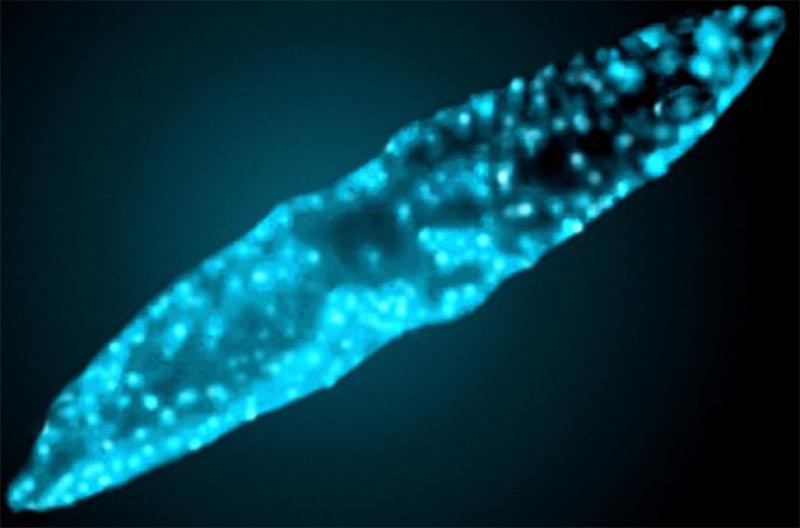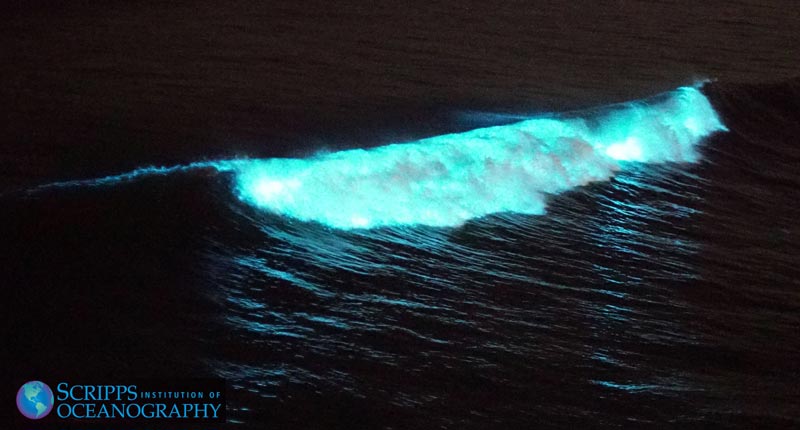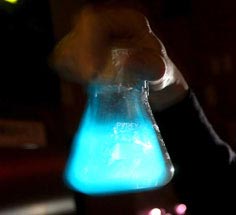Bioluminescent Phytoplankton: What Makes Glowing Sand On Oregon Coast, Washington
Published 07/07/020 at 2:44 AM PDT
By Oregon Coast Beach Connection staff / Andre' GW Hagestedt

Includes exclusive listings; some specials in winter
In Cannon Beach:
Includes rentals not listed anywhere else
In Manzanita, Wheeler, Rockaway Beach:
Some specials for winter
In Pacific City, Oceanside:
Some specials for winter
In Lincoln City:
Some specials for winter
In Depoe Bay, Gleneden Beach:
Some specials for winter
In Newport:
Look for some specials
In Waldport
Some specials for winter
In Yachats, Florence
Some specials for winter
(Newport, Oregon) – One of the more treasured, wondrous and surreal experiences you can have on the Oregon coast (and even on Washington beaches) is encountering what’s nicknamed “glowing sand” at night. Some areas have their colloquial names for it, such as in Rockaway Beach locals call it “star stompin’.” It’s where the wet sand at the tideline glows just slightly when touched, usually seen as tiny little blue/green sparks as you walk on it. (Above: a closeup of a dinoflagellate, photo courtesy Dr. Edith Widder)
Even more spectacular is if the stuff is in a pool of sea water: stepping there will cause what looks like a small galaxy to suddenly and swiftly erupt beneath your feet. A whole mass of blue / green explosions happen.
Glowing sand is nearly impossible to photograph. Oregon Coast Beach Connection has tried for years but only snagged a faint blue dot or two. It’s too faint for even more professional camera gear, although higher-end rigs with high ASA capabilities and some newer cellphone cameras have been getting more and more glimpses of the awe-inspiring sight on this coastline. In warmer climates it’s brighter and easier to capture, such as California, Florida or South America. You need extremely dark conditions here to see it, including no moon or street lights (which makes Seaside a bad spot for finding them).
But what causes glowing sand? (See a photo of this at Oceanside)
It’s a form of phytoplankton called dinoflagellates, which are bioluminescent. This means they glow – like fireflies. Bioluminescent phytoplankton are just like all other phytos: they’re microscopic plants and the bottom of the food chain in the ocean. There are two main types of phytoplankton on the Oregon and Washington coast, and both also create what we know as sea foam. The other common one is diatoms. See What Is Sea Foam on Oregon Coast.

Above: glowing breakers in California (rarely seen on the Oregon coast). Photo courtesy Scripps Institute
So how do the bioluminescent phytoplantkon known as dinoflagellates work?
Sheanna Steingass with Oregon Department of Fish and Wildlife (ODFW) at its Newport office is probably the preeminent expert on the tiny phytos of the Oregon coast. It’s a biochemical reaction inside them, where oxygen is combined with two chemical substances contained in the dinoflagellate.
First, Steingass said, they need to be poked somehow, which means simple ocean turbulence causes them to fire off, as well as walking on them or when they’re riding around in the breakers. On rare occasions you can see that happening with the naked eye in Washington or Oregon but usually that takes warmer climes. In the Pacific Northwest, you need advanced photo gear to catch that.
“The mechanism for glowing in different plants and animals varies a lot,” Steingass said. “For dinoflagellates, this is created by an oxidative reaction (adding oxygen) to a compound luciferin (named from the latin 'light' or 'lucifer' with an -in added).”
On top of that, an enzyme called luciferase speeds up and helps that glowing reaction.
 “Upon disturbance, dinoflagellates, which are single-celled alga, somehow start this reaction by lowering the pH of their bodies, and luciferin becomes reactive with oxygen and a spark of light occurs,” she said. “How and why this all happens is still debated and not clear - which is why the ocean is so cool.”
“Upon disturbance, dinoflagellates, which are single-celled alga, somehow start this reaction by lowering the pH of their bodies, and luciferin becomes reactive with oxygen and a spark of light occurs,” she said. “How and why this all happens is still debated and not clear - which is why the ocean is so cool.”
People often use the misnomer “phosphorescence” to describe this glowing sand thing on Oregon’s coastline. That’s far from correct, however. One is biochemical and the other usually just physics, like when you play with black light stickers.
“Bioluminescence can take place via a variety of chemical reactions, always using luciferin as a substrate for the reaction,” Steingass said. “Phosphorescence is where light is absorbed, internal electrons are excited, and when that electron temporarily moves to a higher orbit, a photon of light is produced. This can happen over and over without needing a chemical reaction or enzyme.”
How many kinds of bioluminescent phytoplankton / dinoflagellates are there off the Oregon coast?
Therein lies another cool mystery: no one really knows for sure. A paper in 1972 written by an OSU researcher named Wayne Evor Esaias named dozens of different kinds of phytoplankton off Newport and he discovered 17 different types of dinoflagellates were bioluminescent, and thus capable of causing glowing sand. Steingass said scientists are really just now figuring these things out.
Along the Washington coast it can be spotted as well, but during warmer times of the year these bioluminescent lovelies really show up in Bellingham Bay and other parts of the inner peninsula. There are even kayaking guide services for this up north.
On the Oregon coast, glowing sand is definitely more commonly seen in warmer months as well, at least in greater numbers. One of the most amazing sights is when these reach into bays, like those at Winchester Bay on the south coast, Yaquina Bay or Nehalem Bay. If the dinoflagellates are there and you stick your hand in the bay it will have an eerie glow behind it. See the stunning video of glowing phytoplankton in Nehalem Bay below by Angelina Martin.
September and early October – when the coastlines are at their warmest – are even better.
What else increases your chances of seeing glowing sand / bioluminescent phytoplankton? Steingass said it comes down to north winds.
“Dinoflagellate and algal blooms happen during periods of heavy upwelling in which northerly winds cause upwelling of cold, nutrient rich water along the coast, making these nutrients available for primary producers,” she said. “So look for times when that cold wind blows heavily from the north, and for a few days/weeks thereafter.”
Oregon Coast Hotels for this - Where to eat - Map - Virtual Tour
Cannon Beach Lodging
Nehalem Bay Lodgings
Manzanita Hotels, Lodging
Three Capes Lodging
Pacific City Hotels, Lodging
Lincoln City Lodging
Depoe Bay Lodging
Newport Lodging
Waldport Lodging
Yachats Lodging
Oregon Coast Vacation Rentals
Oregon Coast Lodging Specials
More About Oregon Coast hotels, lodging.....
More About Oregon Coast Restaurants, Dining.....
LATEST Related Oregon Coast Articles
Advisories, watches and warnings in various areas except the central Oregon coast. Weather, traffic
N. Oregon Coast Rescuers Assist Boaters with No Life Vests at Netarts Bay
N. Oregon Coast rescuers discovered boaters at Netarts Bay with no life vests. Beach safety
Oregon Coast This Week: Grisly 'Globster' Stuck in Devil's Punchbowl, Rescue ...
A whale carcass is floating around Devil's Punchbowl; an injured hiker was rescued at Bayocean. Marine sciences
Video: Notorious Bump on Route to Oregon Coast Replicates - But There's a Hum...
Recent storms have caused more landslides that lead to roadway buckling. Traffic
Ice Skating Rink at South Oregon Coast's North Bend A Big Hit and New Tradition
In downtown North Bend through January 31, 2026. Coos Bay events
This Week's Oregon / Washington Coast King Tides: What It Brings, What It Doe...
No large waves expected, but still interesting conditions in both states. Weather
Central Oregon Coast Silent Disco - and Newport Seafood Wine Fest 2026 Preview
Silent Disco at NPAC on January 10; Seafood Wine Fest runs February 19?22. Newport events
Newport Gets Rescue Copter Back After Lawsuit, Still Fighting ICE Dentention ...
The move would have left the closest helicopter rescue 100 miles away. Safety
Back to Oregon Coast
Contact Advertise on BeachConnection.net
All Content, unless otherwise attributed, copyright BeachConnection.net Unauthorized use or publication is not permitted















































